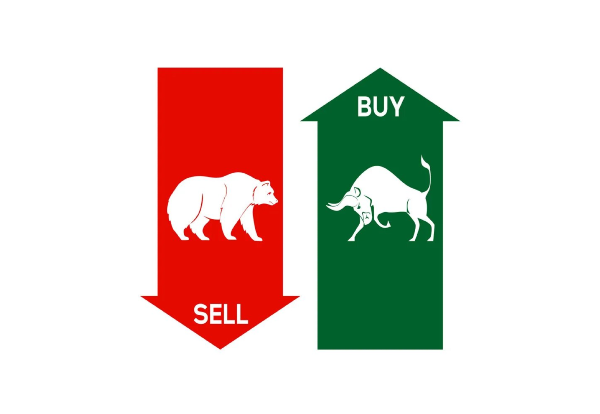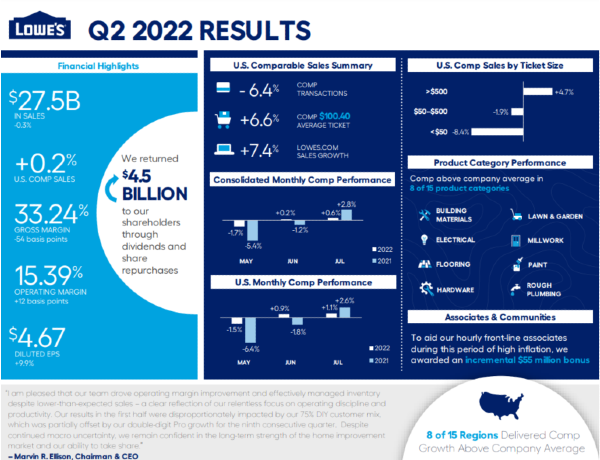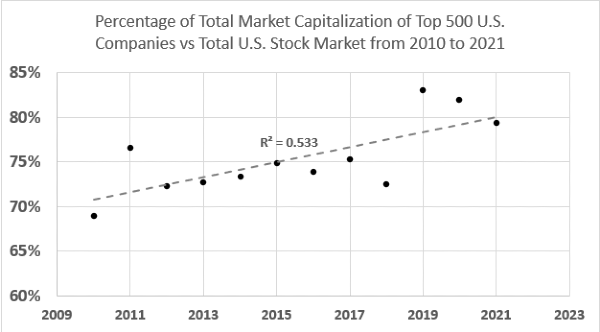Overview: The dollar has come back from the weekend bid. After the ECB and BOJ meetings last week, the focus has shifted back to the US where the FOMC meeting concludes in the middle of the week and the October employment report is out ahead of the weekend. Sterling and the yen are the weakest performers among the G10 currencies and are off 0.45%-0.50%. The Antipodeans are performing best and are straddling little changed levels. Emerging market currencies are lower, led by the South African rand, the Russian rouble, and the Chinese yuan. Most of the large bourses in the Asia Pacific region gained by Hong Kong and the mainland’s CSI 300. Europe’s Stoxx 600 is slightly lower after rising four of last week’s five sessions. After strong pre-weekend gains, the US index futures are nursing small losses. Meanwhile, benchmark 10-year yields are higher. The US 10-year Treasury yield is practically five basis points higher at 4.06%, while European yields are mostly 4-7 bp higher. Gilts are the most resilient today, with the 10-year yield up less than two basis points. Gold is trading heavily, extending its losses for the third consecutive session as a firmer dollar and rates weighs on the yellow metal. December WTI tested and held below its 200-day moving average on October 27 (~$89.70) and reached a three-day low near $86.75 today. US natgas is jumping 8.2% after the pre-weekend’s 9.6% surge. It is trading near two-week highs. Europe’s benchmark is off nearly 12.3% today to snap a four-day advance. Still, last week it fell by 4.3%, and was the ninth consecutive weekly decline. Meanwhile, iron ore fell 2.1% to extend its losing streak for the six straight session. It is off 13% in this down draft to two-year lows. December copper is off 1% today after fallen 1.3% last week. Russia’s pull out of the Ukrainian grain deal has propelled December wheat sharply higher. It had fallen by about 10% over the past four weeks. Today, it has gapped higher and is trading around 6.6% better.
Asia Pacific
China's zero-Covid policy does appear to be evolving, but contrary to the consensus narrative, it does not seem to be on the verge of being jettisoned. The argument is that the hit to the economy will get Beijing to capitulate. This seems to be wishful thinking and gives Chinese officials an American or European-like reaction function. Judging by the declaratory policy signals, additional monetary and fiscal stimulus are likely to be rolled out to support the economy. New cases in Shanghai are spurring mass testing and worries about localized lockdowns. The Hanyang district (population ~900k) was under lockdown for a few days until the middle of last week. Fuzhou, the capital of the Fujian province, has shut down "non-essential" businesses and schools, but people can leave homes for groceries. Zhengzhou (population ~10 mln), the capital of the Henan province, was in partial lockdown last week. Foxconn employs "hundreds of thousands" of workers in Zhengzhou, according to Reuters reports.
China's October PMI was poor. The manufacturing PMI fell to 49.2 from 50.1. The sub-50 reading had been expected, but it was lower than anticipated. The service PMI tumbled from 50.6 to 48.7. The median forecast in Bloomberg's survey had it holding above 50. The net result was the composite fell to 49.0 from 50.9 and is the lowest since May. The Caixin iteration is tomorrow (manufacturing) and Wednesday. All three readings were below 50 in September.
Japan's data were mixed. Retail sales fared better than expected while industrial production was worse. Japanese consumers have been on a shopping spree. After rising 1.3% in August (month-over-month), retail sales rose 1.1% in August. The median forecast (Bloomberg survey) was for a 0.8% increase. However, weighed down by weakness in the auto sector (supply chain woes), September industrial output fell by 1.6%, twice the anticipated decline. It was the first decline in four months.
Australia's September retail sales rose by 0.6% in September, the same as in August. It appeared to have been boosted by the holiday to honor Queen Elizabeth II. The Reserve Bank of Australia meets the first thing tomorrow. The stronger-than-expected Q3 (and September) CPI fanned some expectation for a larger move, but most still expect a quarter-point hike that would bring the target rate to 2.85%. Another 25 bp hike is expected in December as well.
The US dollar extended its recovery against the yen after approaching JPY145 last Thursday. It is trading on session highs in Europe near JPY148.50. Some buying may be related to the $470 mln option at JPY148 that expires today. A move above JPY148.55 could spur a near-term test on the JPY149.35 area. The greenback has not traded above JPY150 since October 21. The Australian dollar is heavy near the pre-weekend low (~$0.6390). Initial support may be found ahead of $0.6365. The intraday momentum indicators are stretched, suggesting the North American session may be cautious ahead of tomorrow's RBA meeting. The dollar is trading above CNY7.30, but so far has held below last week's high set a little shy of CNY7.31. Recall that the mainland markets were closed for the first week of October. Since the markets re-opened on October 10, the yuan has risen in only three sessions (once a week). The dollar's reference rate was set at CNY7.1768 compared with the median projection in Bloomberg's survey for CNY7.2323. It was a higher dollar fix for the second consecutive session. The upper end of the 2% band is around CNY7.32 today.
Europe
A few weeks ago, the UK's turmoil was supposedly a shot across the proverbial bow. The strains supposedly from the Fed's aggressive tightening and the strong dollar were risking a new systemic crisis. The use of the SNB's swap lines with the Fed, and in greater magnitudes seen during 2020, appeared to fit into the narrative. Yet, it seems more apparent now perhaps than it was an idiosyncratic (country-specific) issue, and orthodoxy was restored, UK rates returned to the status quo ante. As we suggested, the Swiss machinations seemed to be more of a financial arbitrage than the "canary in the coal mine" Banks in Switzerland took no dollars at last week's window. It would not be surprising if we later learned that officials discouraged profiting from an emergency facility. Meanwhile, total Swiss sight deposits continue to unwind. They fell for the sixth consecutive week and are now 23% below the September peak.
UK Prime Minister Sunak is the champion of fiscal orthodoxy, but that will only carry him (and the UK so far). Three flashpoints are emerging. First, Sunak, the accidental Chancellor, when Javid refused orders from 10 Downing Street (Johnson) to fire all of his advisers, sought what is dubbed "call-in powers" that allow the government to overrule the financial rules set by regulators, such as the Bank of England and Financial Conduct Authority. The BOE and FCA are pushing back against what they see as an encroachment of their independence. Second, although Sunak is said to support a ban on fracking, he will not attend this year's climate summit (last year held in Glasgow) and demoted two climate ministers last week (no longer cabinet-level rank). Although Truss planned to represent the UK at COP 27, she blocked King Charles from going, and Sunak has (so far) refused to give his consent. There are some reports suggesting that the Prime Minister may reconsider. Sunak is expected to maintain the ban on onshore wind farms. Third, as Sunak formed his government, he made some overtures to some that had previously served in Johnson and Truss's government. Truss had dismissed Home Secretary Braverman over sharing confidential cabinet reports. Sunak gave Braverman's old position back to her, but new questions are being raised, which could distract the new government. Could she be out for the second time over the same incident?
The eurozone's October CPI surge to 10.7% from 10.0% in September, and the core rate rose to 5.0%. These are new cyclical highs and underscore the pressure on the ECB after it delivered its second 75 bp hike last week. The swaps market has a slight leaning to another 75 bp hike at the next meeting in the middle of December. Separately, it reported that Q3 GDP edged up by 0.2% after the regional economy expanded by 0.8% in Q2. Tomorrow’s final PMI readings will underscore the concern that the eurozone is entering an outright contraction.
The euro had approached $1.01 last week and is trading at a four-day low in Europe today slipping briefly below $0.9915. The pre-weekend low was slightly above $0.9925. Last week's low was near $0.9805 and the week before, the low was closer to $0.9705. A break of $0.9900 signals a test on the $0.9850 area. The intraday momentum indicators are oversold in the European morning and some consolidation looks likely in North America. The $0.9960 area may offer a nearby cap. For its part, sterling is confined to its pre-weekend range (~$1.1505-$1.1625). It has recorded the session low near $1.1545 in the European morning, and with stretched momentum indicators, looks poised to recover back into the $1.1580-$1.1600 area. The swaps market, which, before the weekend, was about 50/50 about a 75 bp hike later this week has edged back toward greater confidence of a 75 bp hike today.
America
Last week, the US and EU set up a task force to address concerns stemming from the Inflation Reduction Act. It will meet for the first time this week. The heart of the issue is the economic nationalism in the law, including the tax break on domestically made electric vehicles. Tariff barriers on goods to trade been the US and Europe have, for the most part, reduced to de minimis levels. The average import tariff, for example, on industrial goods into the EU from the US is 4.3%, while industrial goods from the EU to the US face a 3.8% levy. The challenge is primarily non-tariff barriers today. Subsidies are a key problem and were at the heart of the Boeing-Airbus dispute. The Trade and Technology Council (TTC, launched September 2021) will meet in early December. While a US-EU free-trade agreement does not seem likely, the TTC may reflect the new US approach. Its focus appears to be on the technical work of harmonizing trade and technology standards. This may also be another forum to discuss semiconductor subsidies as the US and EU seek to boost their domestic semiconductor industry while blocking China's attempt.
The US sees the Chicago PMI and the Dallas Fed's manufacturing survey today. Neither is typically a market-mover, and this may be especially true today ahead of the big week that features the FOMC meeting (Wednesday) and the October employment report (Friday). Tomorrow is the final manufacturing PMI, JOLTS, ISM manufacturing, and auto sales. Canada has a light economic calendar today and the highlight of the week will the jobs report on Friday. The labor market is losing momentum. Mexico reports Q3 GDP today. A 0.8% quarter-over-quarter expansion is expected after 0.9% in Q2. Lula has won the Brazilian election, as widely anticipated, though Bolsonaro has yet to concede defeat.
The US dollar recorded this month's low against the Canadian dollar in the middle of last week slightly below CAD1.35. It recovered to CAD1.3635 ahead of the weekend. Those gains have been extended to almost CAD1.3660 today. The CAD1.3680-CAD1.3700 area houses the 20-day moving average and the (38.2%) retracement objective (of the move since the CAD1.40 area was approached on October 13). Above there, and the CAD1.3735-40 area comes into view. Initial support is seen near CAD1.3600. The greenback nudged below MXN19.80 before the weekend for the first time since mid-September. There has been no follow-through and the dollar bounced to around MXN19.8735 in that transition between Asia and Europe. Still, it can retest the MXN19.80 area. There is little on a convincing break ahead of MXN19.60. Nervousness ahead of the election weighed on the Brazilian real last week. It weakened by about 2.5%, its biggest weekly loss of the month. On Bolsonaro's concession, the real can recover. Lula's has formed a broad center-left coalition and international investors seem constructive.




























Overview: The dollar has come back from the weekend bid. After the ECB and BOJ meetings last week, the focus has shifted back to the US where the FOMC meeting concludes in the middle of the week and the October employment report is out ahead of the weekend. Sterling and the yen are the weakest performers among the G10 currencies and are off 0.45%-0.50%. The Antipodeans are performing best and are straddling little changed levels. Emerging market currencies are lower, led by the South African rand, the Russian rouble, and the Chinese yuan. Most of the large bourses in the Asia Pacific region gained by Hong Kong and the mainland’s CSI 300. Europe’s Stoxx 600 is slightly lower after rising four of last week’s five sessions. After strong pre-weekend gains, the US index futures are nursing small losses. Meanwhile, benchmark 10-year yields are higher. The US 10-year Treasury yield is practically five basis points higher at 4.06%, while European yields are mostly 4-7 bp higher. Gilts are the most resilient today, with the 10-year yield up less than two basis points. Gold is trading heavily, extending its losses for the third consecutive session as a firmer dollar and rates weighs on the yellow metal. December WTI tested and held below its 200-day moving average on October 27 (~$89.70) and reached a three-day low near $86.75 today. US natgas is jumping 8.2% after the pre-weekend’s 9.6% surge. It is trading near two-week highs. Europe’s benchmark is off nearly 12.3% today to snap a four-day advance. Still, last week it fell by 4.3%, and was the ninth consecutive weekly decline. Meanwhile, iron ore fell 2.1% to extend its losing streak for the six straight session. It is off 13% in this down draft to two-year lows. December copper is off 1% today after fallen 1.3% last week. Russia’s pull out of the Ukrainian grain deal has propelled December wheat sharply higher. It had fallen by about 10% over the past four weeks. Today, it has gapped higher and is trading around 6.6% better.
Asia Pacific
China's zero-Covid policy does appear to be evolving, but contrary to the consensus narrative, it does not seem to be on the verge of being jettisoned. The argument is that the hit to the economy will get Beijing to capitulate. This seems to be wishful thinking and gives Chinese officials an American or European-like reaction function. Judging by the declaratory policy signals, additional monetary and fiscal stimulus are likely to be rolled out to support the economy. New cases in Shanghai are spurring mass testing and worries about localized lockdowns. The Hanyang district (population ~900k) was under lockdown for a few days until the middle of last week. Fuzhou, the capital of the Fujian province, has shut down "non-essential" businesses and schools, but people can leave homes for groceries. Zhengzhou (population ~10 mln), the capital of the Henan province, was in partial lockdown last week. Foxconn employs "hundreds of thousands" of workers in Zhengzhou, according to Reuters reports.
China's October PMI was poor. The manufacturing PMI fell to 49.2 from 50.1. The sub-50 reading had been expected, but it was lower than anticipated. The service PMI tumbled from 50.6 to 48.7. The median forecast in Bloomberg's survey had it holding above 50. The net result was the composite fell to 49.0 from 50.9 and is the lowest since May. The Caixin iteration is tomorrow (manufacturing) and Wednesday. All three readings were below 50 in September.
Japan's data were mixed. Retail sales fared better than expected while industrial production was worse. Japanese consumers have been on a shopping spree. After rising 1.3% in August (month-over-month), retail sales rose 1.1% in August. The median forecast (Bloomberg survey) was for a 0.8% increase. However, weighed down by weakness in the auto sector (supply chain woes), September industrial output fell by 1.6%, twice the anticipated decline. It was the first decline in four months.
Australia's September retail sales rose by 0.6% in September, the same as in August. It appeared to have been boosted by the holiday to honor Queen Elizabeth II. The Reserve Bank of Australia meets the first thing tomorrow. The stronger-than-expected Q3 (and September) CPI fanned some expectation for a larger move, but most still expect a quarter-point hike that would bring the target rate to 2.85%. Another 25 bp hike is expected in December as well.
The US dollar extended its recovery against the yen after approaching JPY145 last Thursday. It is trading on session highs in Europe near JPY148.50. Some buying may be related to the $470 mln option at JPY148 that expires today. A move above JPY148.55 could spur a near-term test on the JPY149.35 area. The greenback has not traded above JPY150 since October 21. The Australian dollar is heavy near the pre-weekend low (~$0.6390). Initial support may be found ahead of $0.6365. The intraday momentum indicators are stretched, suggesting the North American session may be cautious ahead of tomorrow's RBA meeting. The dollar is trading above CNY7.30, but so far has held below last week's high set a little shy of CNY7.31. Recall that the mainland markets were closed for the first week of October. Since the markets re-opened on October 10, the yuan has risen in only three sessions (once a week). The dollar's reference rate was set at CNY7.1768 compared with the median projection in Bloomberg's survey for CNY7.2323. It was a higher dollar fix for the second consecutive session. The upper end of the 2% band is around CNY7.32 today.
Europe
A few weeks ago, the UK's turmoil was supposedly a shot across the proverbial bow. The strains supposedly from the Fed's aggressive tightening and the strong dollar were risking a new systemic crisis. The use of the SNB's swap lines with the Fed, and in greater magnitudes seen during 2020, appeared to fit into the narrative. Yet, it seems more apparent now perhaps than it was an idiosyncratic (country-specific) issue, and orthodoxy was restored, UK rates returned to the status quo ante. As we suggested, the Swiss machinations seemed to be more of a financial arbitrage than the "canary in the coal mine" Banks in Switzerland took no dollars at last week's window. It would not be surprising if we later learned that officials discouraged profiting from an emergency facility. Meanwhile, total Swiss sight deposits continue to unwind. They fell for the sixth consecutive week and are now 23% below the September peak.
UK Prime Minister Sunak is the champion of fiscal orthodoxy, but that will only carry him (and the UK so far). Three flashpoints are emerging. First, Sunak, the accidental Chancellor, when Javid refused orders from 10 Downing Street (Johnson) to fire all of his advisers, sought what is dubbed "call-in powers" that allow the government to overrule the financial rules set by regulators, such as the Bank of England and Financial Conduct Authority. The BOE and FCA are pushing back against what they see as an encroachment of their independence. Second, although Sunak is said to support a ban on fracking, he will not attend this year's climate summit (last year held in Glasgow) and demoted two climate ministers last week (no longer cabinet-level rank). Although Truss planned to represent the UK at COP 27, she blocked King Charles from going, and Sunak has (so far) refused to give his consent. There are some reports suggesting that the Prime Minister may reconsider. Sunak is expected to maintain the ban on onshore wind farms. Third, as Sunak formed his government, he made some overtures to some that had previously served in Johnson and Truss's government. Truss had dismissed Home Secretary Braverman over sharing confidential cabinet reports. Sunak gave Braverman's old position back to her, but new questions are being raised, which could distract the new government. Could she be out for the second time over the same incident?
The eurozone's October CPI surge to 10.7% from 10.0% in September, and the core rate rose to 5.0%. These are new cyclical highs and underscore the pressure on the ECB after it delivered its second 75 bp hike last week. The swaps market has a slight leaning to another 75 bp hike at the next meeting in the middle of December. Separately, it reported that Q3 GDP edged up by 0.2% after the regional economy expanded by 0.8% in Q2. Tomorrow’s final PMI readings will underscore the concern that the eurozone is entering an outright contraction.
The euro had approached $1.01 last week and is trading at a four-day low in Europe today slipping briefly below $0.9915. The pre-weekend low was slightly above $0.9925. Last week's low was near $0.9805 and the week before, the low was closer to $0.9705. A break of $0.9900 signals a test on the $0.9850 area. The intraday momentum indicators are oversold in the European morning and some consolidation looks likely in North America. The $0.9960 area may offer a nearby cap. For its part, sterling is confined to its pre-weekend range (~$1.1505-$1.1625). It has recorded the session low near $1.1545 in the European morning, and with stretched momentum indicators, looks poised to recover back into the $1.1580-$1.1600 area. The swaps market, which, before the weekend, was about 50/50 about a 75 bp hike later this week has edged back toward greater confidence of a 75 bp hike today.
America
Last week, the US and EU set up a task force to address concerns stemming from the Inflation Reduction Act. It will meet for the first time this week. The heart of the issue is the economic nationalism in the law, including the tax break on domestically made electric vehicles. Tariff barriers on goods to trade been the US and Europe have, for the most part, reduced to de minimis levels. The average import tariff, for example, on industrial goods into the EU from the US is 4.3%, while industrial goods from the EU to the US face a 3.8% levy. The challenge is primarily non-tariff barriers today. Subsidies are a key problem and were at the heart of the Boeing-Airbus dispute. The Trade and Technology Council (TTC, launched September 2021) will meet in early December. While a US-EU free-trade agreement does not seem likely, the TTC may reflect the new US approach. Its focus appears to be on the technical work of harmonizing trade and technology standards. This may also be another forum to discuss semiconductor subsidies as the US and EU seek to boost their domestic semiconductor industry while blocking China's attempt.
The US sees the Chicago PMI and the Dallas Fed's manufacturing survey today. Neither is typically a market-mover, and this may be especially true today ahead of the big week that features the FOMC meeting (Wednesday) and the October employment report (Friday). Tomorrow is the final manufacturing PMI, JOLTS, ISM manufacturing, and auto sales. Canada has a light economic calendar today and the highlight of the week will the jobs report on Friday. The labor market is losing momentum. Mexico reports Q3 GDP today. A 0.8% quarter-over-quarter expansion is expected after 0.9% in Q2. Lula has won the Brazilian election, as widely anticipated, though Bolsonaro has yet to concede defeat.
The US dollar recorded this month's low against the Canadian dollar in the middle of last week slightly below CAD1.35. It recovered to CAD1.3635 ahead of the weekend. Those gains have been extended to almost CAD1.3660 today. The CAD1.3680-CAD1.3700 area houses the 20-day moving average and the (38.2%) retracement objective (of the move since the CAD1.40 area was approached on October 13). Above there, and the CAD1.3735-40 area comes into view. Initial support is seen near CAD1.3600. The greenback nudged below MXN19.80 before the weekend for the first time since mid-September. There has been no follow-through and the dollar bounced to around MXN19.8735 in that transition between Asia and Europe. Still, it can retest the MXN19.80 area. There is little on a convincing break ahead of MXN19.60. Nervousness ahead of the election weighed on the Brazilian real last week. It weakened by about 2.5%, its biggest weekly loss of the month. On Bolsonaro's concession, the real can recover. Lula's has formed a broad center-left coalition and international investors seem constructive.